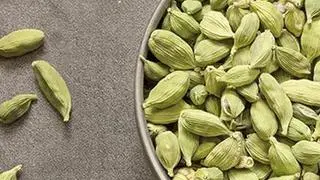Amid the debate over Genetically Modified crops and their acceptance, a new report has revealed a sharp surge in the area under GM crops to 185.1 million hectares, in 2016, indicating a 110-fold jump in the adoption rate over 21 years.
A report by the International Service for the Acquisition of Agri-biotech Applications (ISAAA) named, ‘Global Status of Commercialized Biotech/GM Crops: 2016,’ stated that GM Crop cultivation has touched a new peak showcasing the 110-fold increase in adoption rate of biotech/GM crops globally from 1.7 million hectares in 1996 to 185.1 million hectares in 2016.
In the past, ISAAA, a pro-biotech organisation funded by Monsanto and Mahyco, among others, has been accused of inflating numbers to show growing support for biotech crops.
India, too, is seen adopting GM crops at a rapid pace. The year, 2016 was the turning point for GM crops in India as it transcended from the shadows of the moratorium on Bt brinjal imposed in 2010 towards commercial release of GM mustard.
India has completed the process of inviting public comments on the biosafety dossier of GM mustard, seeking permission for environmental release of transgenic mustard hybrid DMH-11 and parental lines expressing barnase, barstar and bar genes.
These have been developed by the Centre for Genetic Manipulation of Crop Plants of the University of Delhi.
“Biotech crops have become a vital agricultural resource for farmers around the world because of the immense benefits for improved productivity and profitability, as well as conservation efforts,” said ISAAA Chair of the Board, Paul S. Teng.
“With the commercial approvals and plantings of new varieties of biotech potatoes and apples, consumers will begin to enjoy direct benefits of biotechnology with produce that is not likely to spoil or be damaged, which in turn has the potential to substantially reduce food waste and consumer grocery costs,” Teng stated.
The ISAAA report further reveals that the adoption of biotech crops has reduced CO2 emissions equal to removing approximately 12 million cars from the road annually in recent years. Thereby conserving biodiversity by removing 19.4 million hectares of land from agriculture in 2015; and decreased the environmental impact with a 19 per cent reduction in herbicide and insecticide use.
Additionally, it says that in developing countries, planting biotech crops has helped alleviate hunger by increasing the incomes for 18 million small farmers and their families, bringing improved financial stability to more than 65 million people.
“Biotechnology is one of the tools necessary in helping farmers grow more food on less land,” said ISAAA Global Coordinator Randy Hautea.
African nations lead the packAmong African nations, where regulatory processes have traditionally created barriers to biotech crop adoption rates, advances are being realised. In 2016, South Africa and Sudan increased the planting of biotech maize, soybean and cotton to 2.66 million hectares from 2.29 million hectares in 2015.
Elsewhere on the continent, a new wave of acceptance is emerging as Kenya, Malawi, Nigeria, Ethiopia, Ghana, Nigeria, Swaziland and Uganda make advances in regulatory review and commercial approvals for a variety of biotech crops.
Also in 2016, Brazil increased biotech area of maize, soybean, cotton and canola by 11 per cent — maintaining its ranking as the second-largest producer of biotech crops after the US.







Comments
Comments have to be in English, and in full sentences. They cannot be abusive or personal. Please abide by our community guidelines for posting your comments.
We have migrated to a new commenting platform. If you are already a registered user of TheHindu Businessline and logged in, you may continue to engage with our articles. If you do not have an account please register and login to post comments. Users can access their older comments by logging into their accounts on Vuukle.